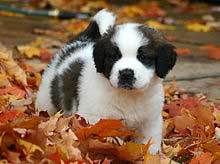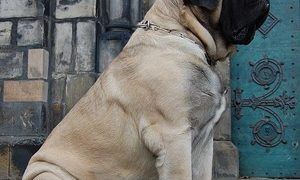“This post contains affiliate links, and I will be compensated if you make a purchase after clicking on my links.”
Description
The Saint Bernard, also known as Saint or the Alpine Mastiff, is a popular breed of giant, muscular dog that originated in Switzerland. It belongs to the Working breed family which is notable for their excellent guarding and rescuing skills. Saints have been bred to become rescue dogs and reliable companions. Their dense coat could either be rough or smooth. Its color may come in white with markings that could be tan, mahogany, red, black or brindle in shade.
Height and Weight
Both the male and female members of the Saint Bernard breed normally stand a height of about 25.5 to 27.5 in. They also commonly have a weight of approximately 110 to 200 lbs.

Temperament
Saint Bernard dogs, in general, are very gentle, calm, and friendly pets. They are docile, patient and extremely tolerant with children. Because of their massive size, the breed tends to move slowly. They are loyal, obedient, and eager to please. Nonetheless, the breed has the propensity to become very clingy and overly protective of their family owners. Early socialization is necessary for them to bond well with human and other animals. Saints are also known to be intelligent and very easy to train. They usually make good watchdogs. They possess extraordinary sense of smell and about impending danger. In addition, male Saint Bernards can be quite domineering. To keep the breed happy, adequate space, affection, time, and training have to be provided.
Grooming
Saints are quite high maintenance when it comes to grooming. They tend to drool and shed a lot. Combing their hair twice a week is a requirement. Daily brushing has to be done during their heavy shedding seasons such as spring and fall.
Health Concerns
Saint Bernard dogs tend to be short-lived. As a matter of fact, they only live for as long as 8 or 9 years. Some of the health issues known to plague the breed are elbow and hip dysplasias. They are also prone to other common conditions such as epilepsy, chronic heart diseases, hemophilia, eye problems, and gastric torsion.
Best Environment

Members of the Saint Bernard breed are generally best suited in areas with cooler climates. They do not respond well to heat. The breed can thrive in living in an apartment. But because of their massive size, they are oftentimes better off in a large home with access to a yard. Saints are capable of thriving outdoors, but would do better when left with their family owners. In addition, the breed is recommended to be taken on daily walks for about an hour or an hour and a half. Off-leash loping in a safe place is also advisable.















M. L. Taylor
Jan 29, 2013 at 9:26 am
I grew up with German Shepherds & have owned several different breeds of dogs along the way (Labs, Great Danes, English Mastiffs) but I will NEVER be without at least one Saint Bernard. They are the most loyal, kind, loving, intelligent, tender & devoted dog you could ever have. Do they shed a lot? Yes. Do they drool? Yes. But these are very, VERY small prices to pay for what they give back. I have a multi-pet, multi-species home & I can always depend on my Saints to get along with everyone & treat even the smallest pet with a gentleness that seems at odds with their huge size. In my opinion, you can never go wrong adding a Saint to your family.
Peggy
Jan 30, 2013 at 8:59 pm
I agree 100% life with out a Saint i dont think so .I have owned 4 saints e2 smooth coats 2 rough coats .they are for sure the most loveable dog a person could have the one i have now is 6yr old an doing great the one before lived to a great age of 12 but lost him with Bloat or twisted stomach so heart breaking . Love these dogs so so much